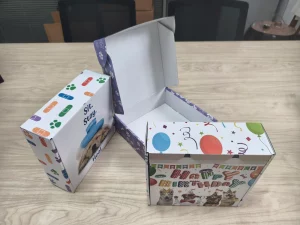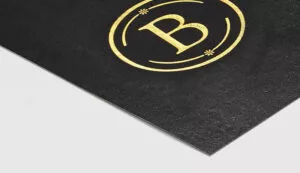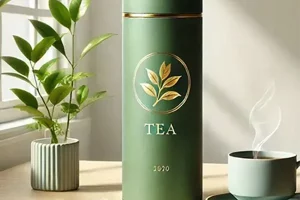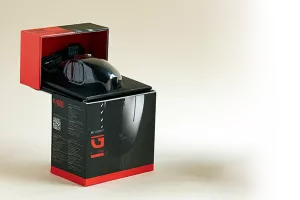In today’s world, choosing the right packaging is important for businesses and the environment. Paper packaging has become a popular choice because it is often more eco-friendly and versatile. This article will help you understand different types of paper packaging materials and how to select the best one for your needs.
جدول المحتويات
الوجبات الرئيسية
- Paper packaging is made from renewable resources, making it a greener choice.
- There are different types of paper packaging, including corrugated cardboard, kraft paper, and paperboard.
- When picking paper packaging, consider factors like cost, strength, and purpose.
- New technologies are improving paper packaging, making it stronger and more stylish.
- Switching to paper packaging can be a smooth process with proper planning and training.
Understanding the Basics of Paper Packaging

What is Paper Packaging?
Paper packaging refers to materials made from paper that are used to protect and transport products. It includes various forms like boxes, bags, and wraps. Paper packaging is eco-friendly and can be recycled or composted, making it a popular choice for many businesses.
Benefits of Using Paper Packaging
Using paper packaging has several advantages:
- الاستدامة: It is made from renewable resources.
- خفيف الوزن: This helps reduce shipping costs.
- Customizable: It can be printed on easily for branding.
Environmental Impact of Paper Packaging
The environmental impact of paper packaging is generally positive compared to plastic. Here are some key points:
- قابل للتحلل الحيوي: Paper breaks down naturally over time.
- قابلة لإعادة التدوير: Most paper products can be recycled multiple times.
- Lower Carbon Footprint: Producing paper packaging often uses less energy than plastic.
Paper packaging is a great choice for businesses looking to reduce their environmental impact while still providing effective protection for their products.
In summary, paper packaging is a versatile option that offers many benefits, including sustainability and cost-effectiveness. It is important to consider the different types of paper packaging available, such as paperboard, which is a strong and durable material made by compressing layers of paper pulp fibers. This makes it suitable for various packaging needs.
Types of Paper Packaging Materials
Corrugated Cardboard
Corrugated cardboard is a strong and lightweight material made from three layers of paper. It is commonly used for shipping boxes and packaging fragile items. Its durability makes it a popular choice for many businesses. Here are some key features:
- Made from recycled materials
- Provides excellent protection for products
- Lightweight, reducing shipping costs
Kraft Paper
Kraft paper is a type of paper that is made from wood pulp. It is known for its strength and versatility. Many companies use kraft paper for bags, wrapping, and boxes. Some benefits include:
- Biodegradable and recyclable
- Strong and tear-resistant
- Available in various thicknesses
الورق المقوى
Paperboard is thicker than regular paper and is often used for packaging food, cosmetics, and other products. It can be coated for extra protection. Here’s what you should know:
- Comes in different grades, including solid bleached sulfate (SBS) paperboard
- Ideal for printing and branding
- Can be easily shaped into boxes or containers
Paper packaging materials are not only effective but also environmentally friendly. Choosing the right type can help your business stand out while being kind to the planet.
Choosing the Right Paper Packaging for Your Needs

When it comes to selecting the right paper packaging, there are several important factors to keep in mind. Choosing the right type can make a big difference in how well your products are protected and presented. Here are some key points to consider:
Factors to Consider When Selecting Paper Packaging
- Product Type: Different products require different levels of protection. For example, fragile items may need sturdier packaging.
- Weight and Size: Make sure the packaging can handle the weight and size of your product without tearing or bending.
- صورة العلامة التجارية: The packaging should reflect your brand’s values and appeal to your target audience.
Comparing Paper Packaging to Other Materials
| مادة | المتانة | Cost | صداقة البيئة |
|---|---|---|---|
| Paper Packaging | Moderate | منخفضة | عالية |
| Plastic Packaging | عالية | Moderate | منخفضة |
| Metal Packaging | Very High | عالية | Moderate |
Cost-Effectiveness of Paper Packaging
- Lower Production Costs: Paper packaging is often cheaper to produce than plastic or metal.
- قابلية إعادة التدوير: Many paper products can be recycled, which can save money in waste disposal.
- تفضيلات المستهلك: More customers are looking for eco-friendly options, which can boost sales.
Choosing the right paper packaging is not just about protection; it’s also about making a good impression on your customers.
In summary, understanding your product and audience is key to selecting the best paper packaging. By considering these factors, you can ensure that your packaging meets your needs and those of your customers. Remember, paperboard is a great option for smaller products, as it offers a balance between thickness and flexibility.
Innovations in Paper Packaging
Sustainable Paper Packaging Solutions
In recent years, companies have introduced التعبئة والتغليف المستدام that goes far beyond cardboard shipping materials and paper straws. This shift is driven by the need for eco-friendly options that reduce waste and environmental impact. Some examples include:
- Biodegradable paper materials
- Recycled paper products
- Compostable packaging solutions
Technological Advances in Paper Packaging
Technology is changing how we create and use paper packaging. Innovations include:
- Smart packaging that can track freshness
- Enhanced printing techniques for better designs
- Improved barrier coatings to protect contents
Trends in Paper Packaging Design
Design trends are evolving to meet consumer preferences and sustainability goals. Key trends include:
- Minimalist designs that reduce material use
- Customizable packaging for branding
- Use of vibrant colors and unique shapes to attract attention
The future of paper packaging is bright, with ongoing innovations that promise to make it more effective and environmentally friendly.
These advancements show that paper packaging is not just about being functional; it’s also about being مبتكرة and appealing to consumers.
Implementing Paper Packaging in Your Business

Steps to Transition to Paper Packaging
Transitioning to paper packaging can be a smooth process if you follow these steps:
- Evaluate your current packaging: Look at what you are using now and see how paper can fit in.
- Choose the right paper materials: Select from options like kraft paper or corrugated cardboard based on your needs.
- Test the new packaging: Before fully switching, try out the paper packaging with a few products to see how it works.
Training Staff on Paper Packaging Use
Training your team is essential for a successful switch. Here are some key points to cover:
- Explain the benefits of using paper packaging.
- Show how to properly handle and pack items with paper materials.
- Discuss the importance of sustainability and how it affects the business.
Measuring the Success of Paper Packaging Implementation
To know if your new packaging is working, consider these factors:
- Customer feedback: Ask customers what they think about the new packaging.
- Cost analysis: Compare costs before and after switching to paper.
- Environmental impact: Track how much waste is reduced with paper packaging.
Switching to paper packaging can not only help the environment but also improve your brand image. Best practices for sustainable packaging can lead to a more eco-friendly business model.
Challenges and Solutions in Paper Packaging

Overcoming Common Paper Packaging Issues
Paper packaging can face several challenges that businesses need to address. Some of the most common issues include:
- المتانة: Paper can be less strong than plastic or metal, making it prone to tearing.
- Moisture Resistance: Paper can absorb water, which can damage the contents inside.
- Cost Fluctuations: Prices for paper materials can change, affecting budgets.
Solutions for Improving Durability
To enhance the strength of paper packaging, consider these solutions:
- Use thicker paper grades for added strength.
- Incorporate protective coatings to resist moisture.
- Design packaging with reinforced corners to prevent tearing.
Addressing Moisture Resistance in Paper Packaging
Moisture can be a significant problem for paper packaging. Here are some strategies to combat this issue:
- Apply water-resistant coatings to the paper.
- Use moisture barriers in the packaging design.
- Store paper products in dry environments to prevent damage.
The paper and packaging industries face a number of challenges ranging from labor shortages to supply chain disruptions and raw material uncertainties. By understanding these challenges and implementing effective solutions, businesses can successfully use paper packaging while minimizing risks.
الخاتمة
In conclusion, picking the right paper packaging is important for your needs. Whether you want to be eco-friendly, save money, or keep your products safe, there are many options available. By understanding the different types of paper materials and their uses, you can make a smart choice that works for you. Remember, the best packaging not only protects your items but also helps the environment. So take your time, explore your options, and choose the paper packaging that fits your goals.
Frequently Asked Questions
What is paper packaging?
Paper packaging is a way to wrap or protect products using materials made from paper. It can include boxes, bags, and wraps.
What are the benefits of using paper packaging?
Using paper packaging is good because it is often lighter, easier to recycle, and can be made from renewable resources. It’s also better for the environment compared to plastic.
How does paper packaging impact the environment?
Paper packaging can be better for the environment if it comes from sustainable sources. However, if not managed well, it can lead to deforestation and waste.
What types of paper packaging materials are there?
There are several types of paper packaging, including corrugated cardboard for boxes, kraft paper for bags, and paperboard for thinner packaging.
How do I choose the right paper packaging for my products?
To choose the right paper packaging, think about what you are packaging, how it will be shipped, and your budget. Consider if you need it to be strong or eco-friendly.
Can I use paper packaging for all types of products?
Not all products are suitable for paper packaging. It works best for dry, lightweight items. For wet or heavy products, you might need stronger materials








